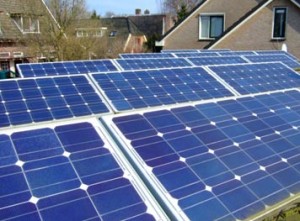 Despite difficult times economically over the last few years in the US, the solar market has been taking off, dramatically increasing the percentage of energy coming from clean, renewable sources. This growth has largely been thanks to a combination of factors. Consumer demand has dramatically increased due to mounting awareness of solar panels as an easy-to-install home improvement – they are becoming more and more visible on thousands of rooftops across the country. This also has gone hand-in-hand with the introduction of popular financial incentives at both federal and local levels.
Despite difficult times economically over the last few years in the US, the solar market has been taking off, dramatically increasing the percentage of energy coming from clean, renewable sources. This growth has largely been thanks to a combination of factors. Consumer demand has dramatically increased due to mounting awareness of solar panels as an easy-to-install home improvement – they are becoming more and more visible on thousands of rooftops across the country. This also has gone hand-in-hand with the introduction of popular financial incentives at both federal and local levels.
Anyone installing solar panels, whether it’s on their home or as part of a large solar farm is eligible for a 30% federal grant towards this cost. This is very valuable – a domestic sized system can easily cost $15,000 or more, so it’s a generous move by the government. Critics of the scheme dislike how solar panels are still not an affordable choice for the poorest of families, but in certain states there are further subsidies available.
Additional help comes in the form of feed in tariff schemes, which pay the owner of solar panels extra money if they are connected to the national grid – the electricity the panels generate but isn’t used can be transferred into the grid for a different house to use. The first President to implement such a scheme was Carter in the 1970s, but it has really become popular for solar energy in more recent years, being introduced in California, Washington, Hawaii and Michigan at varying rates, although in 2010 the Federal Energy Regulatory Commission deemed it illegal to implement tariffs above the market value of electricity due to the Federal Power Act which prohibits setting wholesale electricity rates. This does mean there is a theoretical cap on tariff rates, although hopefully an exception will be made soon to allow renewable energy to be encouraged on a large scale.
The precise advantages of installing solar depends very much on your state, not only because of local financial assistance available, but also because of varying weather conditions. For example, a solar power installation set up in Texas will generate 20% more electricity than the same size installation in New York. Any good company will be able to give you a very accurate figure for how much electricity the panels would generate given your roof size and angle, your geographical location, and any other property-dependent factors. They also ought to be able to give you an accurate figure for how much you could expect to earn with the system and how long it would take to pay itself off.
There will doubtlessly be many challenges in the future for solar policy in the US. Considering schemes in Europe, Germany has had great success through a generous Feed in Tariff available to every resident there – it is simple and does not vary from region to region. The scheme has been planned meticulously in advance, with all of the different rates for different sized systems made available as public information. The UK has not been such a bright example – the government their recently dropped the Feed in Tariff by more than 50% before the official consultation date. This has led to several court battles and the tariff being re-instated, but only temporarily. Sudden changes such as this have shaken confidence in the system, and as with any investment, scared off people seeking safe long term gains. Whilst the US is definitely heading in the right direction with its policy implementation, it must be careful not to get too excited in the renewables rush, and to ensure that any tariffs set can be maintained to keep consumer confidence high.
Written by James Hawkins from a solar panels cost comparison service in the UK. He edits their online solar power blog, and has been working in renewable energy since graduating two years ago.
 Alternative Energy HQ solar power for homes, wind energy, and bio fuel issues
Alternative Energy HQ solar power for homes, wind energy, and bio fuel issues





